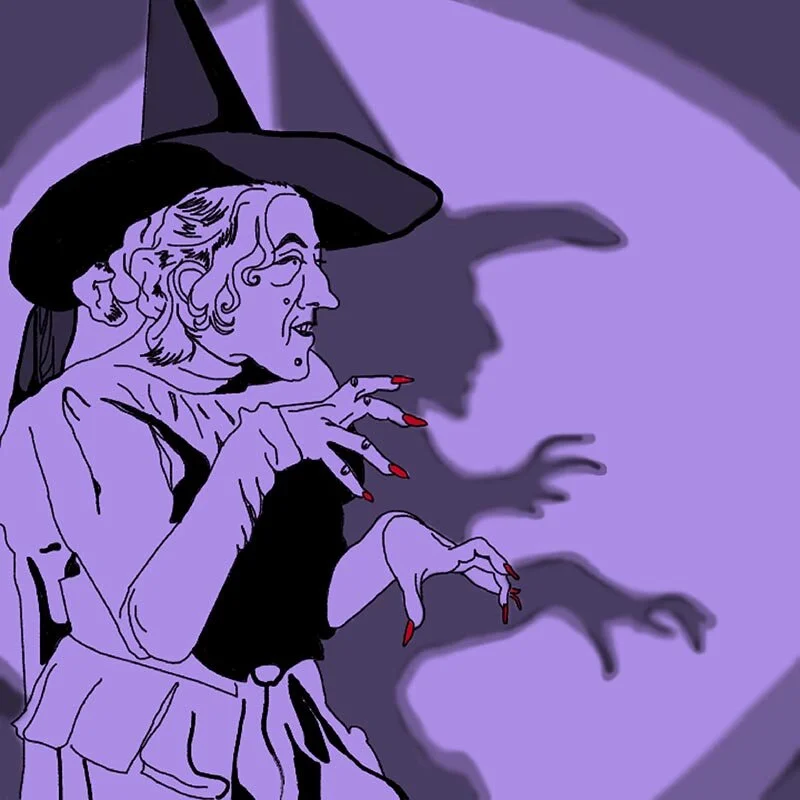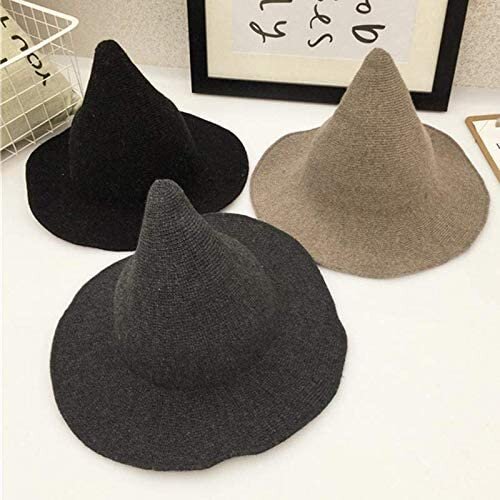The Enduring Appeal of Witch Hats
The pointy hat might have contentious origins, but that hasn’t stopped it from becoming a go-to fall accessory.
By Lindsey B. Harris
Art by Kati Kirsch
What is it about tall, conical-shaped black hats that makes them so inherently witchy?
It’s hard to say.
The origin of the witch’s hat is disputed, but its modern popularity can be attributed to the Wicked Witch of the West’s character from the 1939 movie The Wizard of Oz. Though she’s by no means the oldest witch in popular culture, her depiction helped solidify the perception of witches as broom-riding, hat-wearing crones.
But the evilness of the pointy witch hat goes back hundreds of years — well before the Hollywood actress terrified generations of children with her cackle and hatred of dogs.
In the 13th century, leaders of the Catholic church convened for what is now commonly called the Great Council, during which many important facets of church doctrine were established. One of the doctrines was aimed specifically at Jews and Muslims and required them to wear “a special dress to enable them to be distinguished from Christians so that no Christian shall come to marry them ignorant of who they are.” Jews, in particular, were required to wear a pointy cap called a “Judenhat.” In his 2001 book, Constantine's Sword: The Church and the Jews: A History, former priest James Carroll described the requirement as the “precursor of the infamous yellow badge” from the Holocaust.
A hundred or so years later, the Hungarian city of Zagreb denounced ansprecherin (or “women casting spells”) and czaubern (“sorceresses”), decreeing that they wear a pointed hat painted with angels before being burned. If that sounds bleak, it’s no wonder the Wicked Witches in The Wizard of Oz were so salty.
While some folks might be surprised to discover the dark history of the witch hat, it’s no secret that witchcraft and oppression have often gone hand-in-hand. Michelle Guerrero, an herbalist and self-described witch, explained that another possible origin of the witch’s hat could be the tradition of alewives.
The idea of beer brewing today probably conjures a mental image of a bearded guy wearing flannel and thick glasses (his name is Atticus and he loves David Foster Wallace), but until roughly the 16th century, brewing was women’s work. These savvy business gals would wear tall, pointed black hats to attract attention from customers. The practice came to an end when the women were vilified by others in the industry for allegedly selling “tainted ale,” which is on brand for the treatment of women with pointy hats.
While most media portrayals of witches show them as being wicked, in recent years, movies and television series have put a new spin on them. Shows like Charmed, Sabrina the Teenage Witch, and Buffy the Vampire Slayer featured attractive young witches who used their powers for good. Sisters Gillian and Sandy Owens, played Nicole Kidman and Sandra Bullock in the 1998 film Practical Magic, used their innate powers to fight supernatural forces and improve their love lives. More recent depictions of “good witches” in modern culture include American Horror Story: Coven and The Chilling Adventures of Sabrina, both of which were critically acclaimed and watched by thousands of occult fans.
Unlike ’90s goths who had to find a Hot Topic to source their macabre style, today’s baby bats can order a variety of witchy fashion items online. Top on that list is the “modern witch hat:” a shorter, often knit, pointy cap that has a wrinkly slump to it kind of like the Sorting Hat from Harry Potter. From Amazon to Etsy, there is no lack of vendors willing to cash in on the trend — and clearly no shortage of customers willing to wear it.
As one modern witch hat wearer wrote on Etsy:
“I've gotten so many compliments on this hat and it definitely turns heads, haha. LOVE it. Like, how did I live this long without a witchy hat?”
But the popularity of the witch aesthetic, the hat in particular, could be a source of frustration and even pain for some practicing witches. Here is an item that, regardless of its origins, represents centuries of oppression. And now it’s all over Instagram boutiques.
Guerrero admitted that the initial popularity of witch fashion didn’t sit well with her, but clarified that her perspective has changed over the years.
She commented that folks who wear witch hats purely for fashion are harmless and that the accessory's trendiness is “not worth getting in a dither about.” As for budding witches who are starting with the hat, she observed:
“Our outer appearance can be a manifestation of who we want to be, of who we wish the world to understand us as. So, it would stand to reason that, for many, trying on the witch hat (while certainly a bold fashion choice) can be the first steps to claiming the honored title and practice of witch.”
While some may find it insulting that a source of oppression has grown into a harmless fashion choice, Guerrero has embraced the fact that witches have mainstream appeal. They’re “bold, in control of their own destiny, and often perceived as being dangerous. They can be glamorous, adorable, intimidating...all depending on how they are shaped and made. How could that not be enticing?”













Workwear as regular clothing is now a thing.